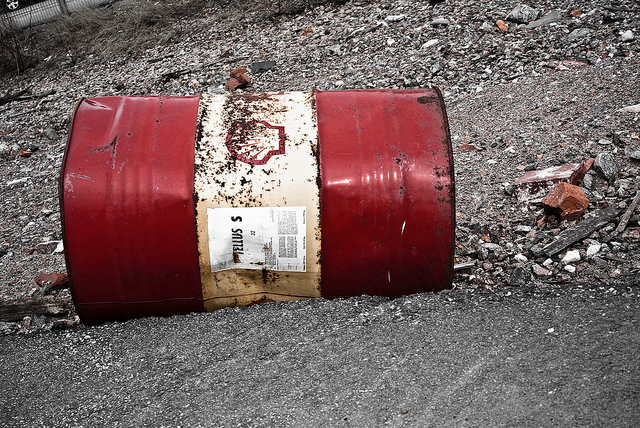 Australians will notice an interesting parallel between oil giant Woodside and its impasse with the Timor Leste government and an internal conflict within the Joko Widodo administration over how to develop what will be Indonesia’s biggest producing gasfield in the Arafura Sea.
Australians will notice an interesting parallel between oil giant Woodside and its impasse with the Timor Leste government and an internal conflict within the Joko Widodo administration over how to develop what will be Indonesia’s biggest producing gasfield in the Arafura Sea.
The common denominator for both is a 2,500–3,000-metre-deep undersea trench, part of the earthquake-prone Indian Ocean fault line that skirts Sumatra and Java and curls around the coast of eastern Indonesia’s Nusa Tenggara island chain.
Marking the convergence of the Indo-Australian and Eurasian tectonic plates, the Timor trench is one reason for Woodside’s adamant refusal to pipe gas from its Sunrise field to Timor Leste, despite all the benefits that would bring the tiny island republic.
The company last year shelved plans to develop the 5.1 trillion cubic foot Sunrise field in the Australia–Timor Leste Joint Petroleum Development Zone after giving Dili an ultimatum to either accept floating LNG technology or leave the gas in the ground.
Hard up against the maritime boundary with Australia, about 400 km northeast of the Sunrise field, the Masela block has the same issue.
After acquiring 100% of the Masela exploration concession in 1998, Japan’s Inpex Corporation drilled six appraisal wells between 2002 and 2007 that showed the Abadi field located in the Masela block contained at least 9 trillion cubic feet. Given the remote location, that still made it a marginal proposition.
Authorities approved an initial development plan in late 2010 calling for a 2.5 million tonne floating liquefied natural gas (LNG) terminal. But with Shell joining the venture in 2013 further drilling saw proven reserves climb to 12.4 trillion cubic feet, with confident expectations it will grow to more than 40 trillion cubic feet.
That’s three times more than BP’s Tangguh operation in West Papua’s Bintuni Bay, of which Inpex is a 7.7% stakeholder; Tangguh was recently given approval to expand from two to three onshore production trains.
Only the Natuna D-Alpha field in the South China Sea is bigger, at 46 trillion cubic feet of recoverable reserves, but the huge volumes of associated CO2 have deterred its development since the early 1970s—and will continue to do so.
Commercially, it would have made sense to pump the Abadi gas through a 400-kilometre pipeline to Darwin’s LNG processing terminal, an idea Inpex initially broached with Jakarta when the real size of the field became clear.
Politically, that was never on the cards. As one analyst exclaimed: ‘Indonesian gas going into Darwin? Never!’ But it became a lot more complicated when President Joko Widodo brought in Rizal Ramli as maritime coordinating minister in an August 2015 Cabinet reshuffle.
An avowed resource nationalist, Ramli questioned why regulator, SSKMigas, and Mines and Energy Minister, Sudirman Said, had approved a revised Inpex development plan which increases the capacity of a proposed floating gas terminal from 2.5 million tonnes to 7.5 million tonnes.
Anxious to find more ways to boost the eastern Indonesian economy, Ramli insisted the gas should instead be piped to a proposed onshore terminal in the remote Tanimbar Islands, 170 kilometres to the northeast of Masela.
Under Indonesia’s 2001 Oil and Gas Law, provinces aren’t entitled to any benefits if the producing field is more than 12 miles offshore, in which case all the revenues go to the central government. But the same trench that has bedeviled the Timor Leste project lies between the Abadi field and the Tanimbars, the target of a daring World War II Dutch–Indonesian commando raid launched from Australia against Japanese occupation forces.
What all this means is yet another delay that could get even longer as the two sides haggle; apart from the earthquake danger, building a new an onshore facility will also pump up the overall cost of the project from US$14 billion to US$19 billion.
Ramli, a former finance minister with little knowledge of the petroleum industry, agreed to bring in New York-based Poten & Partners to study the project. But their independent assessment supports the floating terminal concept as the most viable choice, according to an industry source familiar with the report.
Even if Ramli relents and Widodo pronounces himself satisfied with other arrangements, including the state-run Pertamina oil company acquiring a 10% stake worth $500 million, Inpex and Shell still have to get their contract extended past 2029—a must when production will only begin in 2021–2022.
The joint venture partners have sought to answer their critics by suggesting that a fleet of tankers could be used to supply gas directly from the floating platform to small power stations on the Tanimbars and other islands across eastern Indonesia.
Indonesia has a record of dragging its feet on large-scale resource projects, starting with ExxonMobil’s Cepu oil field in East Java, which took more than a decade to bring on stream because of land and other issues Jakarta seemed incapable of resolving.
ExxonMobil will only be ready in March to begin pumping 168,000 barrels a day from what is now the country’s second biggest oilfield, despite the fact that Indonesia’s oil output has slumped over that period from a million barrels to 788,000 barrels a day.
While Cepu will boost production to 830,000 barrels, the first time it has actually increased since 1996, it’s unlikely to halt a general decline that led to Indonesia relinquishing its membership of the Organisation of Petroleum Exporting Countries in 2009.
As the global oil market continues to slide, it could well be the Indonesian Government, through its inaction, who ends up being the biggest loser of all.

